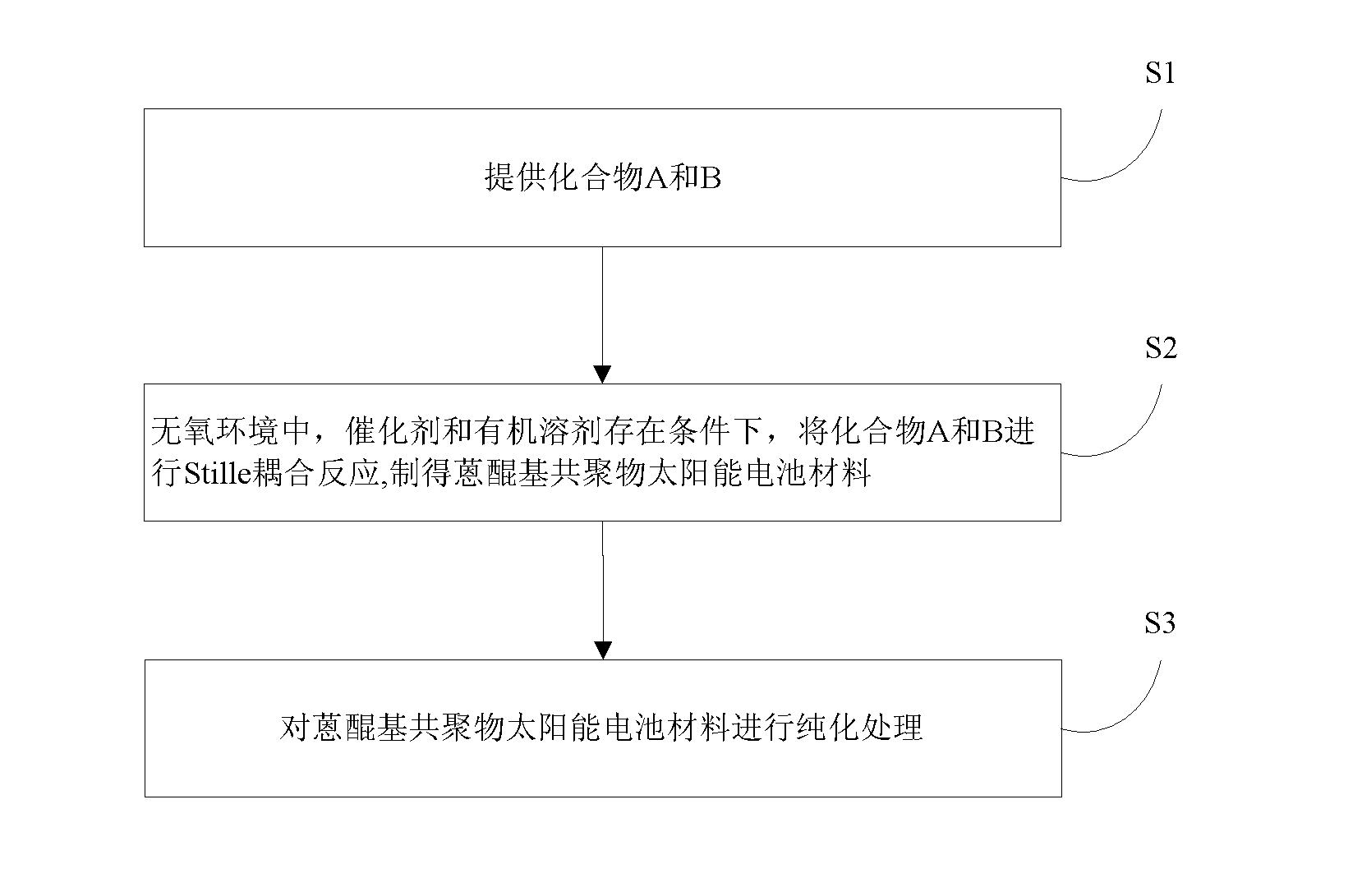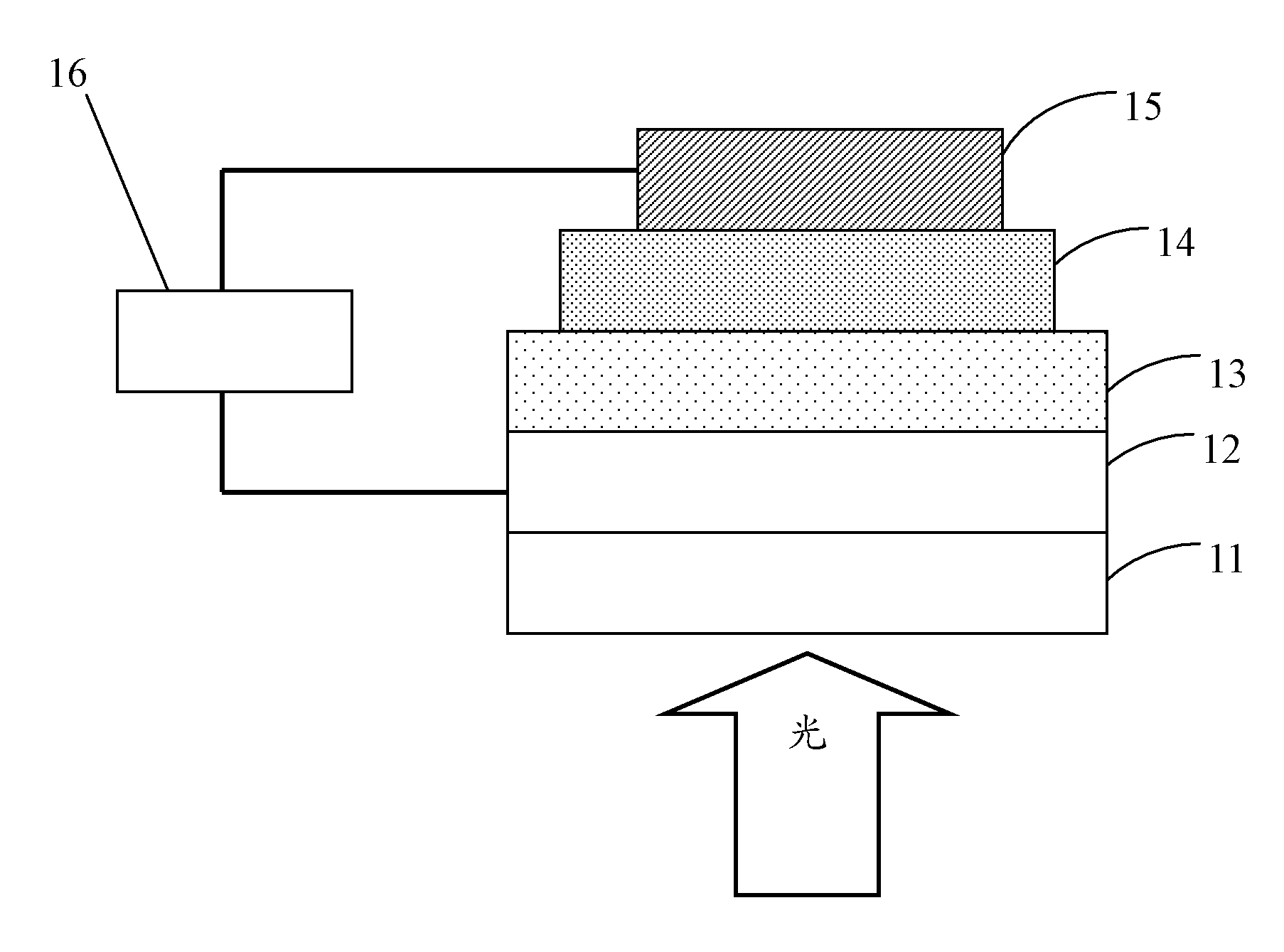Anthraquinone based co-polymer solar cell material, and preparation method and application thereof
A solar cell, anthraquinone-based technology, applied in the field of solar cell materials, can solve the problem that conjugated polymers rarely have literature or patent reports, achieve excellent optoelectronic properties, solve low efficiency problems, and increase carrier mobility. Effect
- Summary
- Abstract
- Description
- Claims
- Application Information
AI Technical Summary
Problems solved by technology
Method used
Image
Examples
preparation example Construction
[0026] The preparation method of above-mentioned anthraquinone-based copolymer solar cell material, such as figure 1 shown, including the following steps:
[0027] S1, respectively provide compound A and compound B represented by the following structural formula,
[0028] A: 2,6-Ditrimethyltin-4,4-dialkylcyclopentane[2,1-b:3,4-b']dithiophene
[0029] B: 2,6-Dibromo-1,5-dialkoxy-9,10-anthraquinone
[0030] Among them, in compound A, R 1 for C 1 ~C 20 The alkyl group; in compound B, R 2 for C 1 ~C 20 the alkyl group;
[0031] S2. In an oxygen-free environment (such as an oxygen-free environment composed of nitrogen, argon, or a mixture of nitrogen and argon), the compound A and compound B are added in a molar ratio of 1:1 into the catalyst containing After fully dissolving in an organic solvent, carry out Stille coupling reaction at 70-130° C. for 6-60 hours, then cool down to stop the reaction to obtain a mixed solution, which contains the product, that is, the ant...
Embodiment 1
[0045] The anthraquinone-based copolymer solar cell material in this example, that is, poly{4,4-dioctylcyclopentane[2,1-b:3,4-b']dithiophene-co-1,5 -Di-n-octyloxy group-9,10-anthraquinone}, wherein, R1 is n-octyl group, R2 is n-octyl group, n is 60, and its structural formula is as follows:
[0046]
[0047] The preparation steps of above-mentioned polymer are as follows:
[0048] The reaction formula is as follows:
[0049]
[0050] 2,6-Ditrimethyltin-4,4-dioctylcyclopentane[2,1-b:3,4-b']dithiophene (218mg, 0.3mmol), 2,6-di Bromo-1,5-dioctyloxy-9,10-anthraquinone (187mg, 0.3mmol), tridibenzylideneacetone dipalladium (13.75mg, 0.015mmol) and tri-tert-butylphosphine (24.2mg, 0.12 mmol) was added into a flask containing 12mL of toluene, dissolved into a solution, and nitrogen was fully vented into the flask for about 30 minutes, then stirred at 95°C, and the Stille coupling reaction was carried out for 40 hours. After cooling down, the polymerization reaction was stopped t...
Embodiment 2
[0055] The anthraquinone-based copolymer solar cell material in this example, that is, poly{4,4-dimethylcyclopentane[2,1-b:3,4-b']dithiophene-co-1,5- Bis(two n-n-decanoyloxy)-9,10-anthraquinone}, wherein, R 1 is methyl, R 2 It is n-eicosyl, n is 40, and its structural formula is as follows:
[0056]
[0057] The preparation steps of above-mentioned polymer are as follows:
[0058] The reaction formula is as follows:
[0059]
[0060] 2,6-Ditrimethyltin-4,4-dimethylcyclopentane[2,1-b:3,4-b']dithiophene (106mg, 0.2mmol) and 2,6-bis Bromo-1,5-bis(eicosyloxy)-9,10-anthraquinone (192mg, 0.2mmol) was added into a 15ml N,N-dimethylformamide flask, dissolved into a solution, and vacuumized The flask was deoxygenated and filled with argon, then bistriphenylphosphinepalladium dichloride (5.6mg, 0.008mmol) was added, stirred at 120°C, and subjected to Stille coupling reaction for 12h. After cooling down, the polymerization reaction was stopped to obtain a mixed solution.
[00...
PUM
| Property | Measurement | Unit |
|---|---|---|
| thickness | aaaaa | aaaaa |
| thickness | aaaaa | aaaaa |
| energy conversion efficiency | aaaaa | aaaaa |
Abstract
Description
Claims
Application Information
 Login to View More
Login to View More - R&D
- Intellectual Property
- Life Sciences
- Materials
- Tech Scout
- Unparalleled Data Quality
- Higher Quality Content
- 60% Fewer Hallucinations
Browse by: Latest US Patents, China's latest patents, Technical Efficacy Thesaurus, Application Domain, Technology Topic, Popular Technical Reports.
© 2025 PatSnap. All rights reserved.Legal|Privacy policy|Modern Slavery Act Transparency Statement|Sitemap|About US| Contact US: help@patsnap.com



